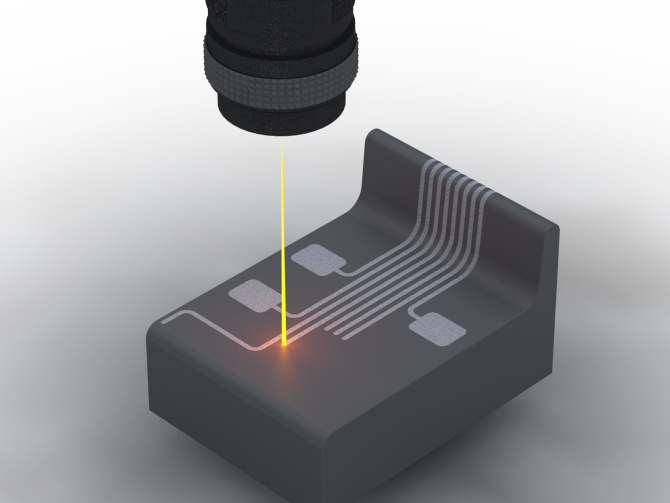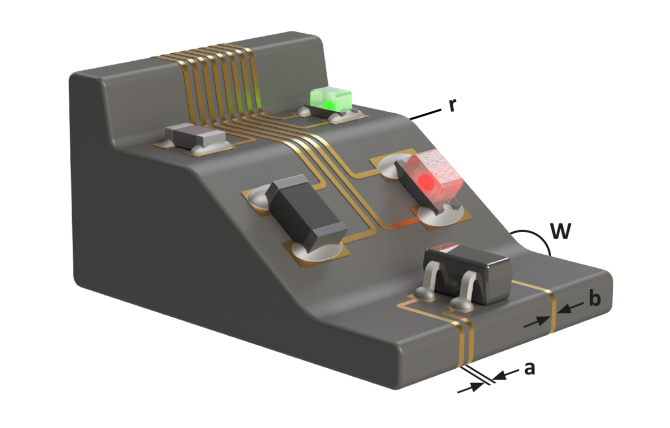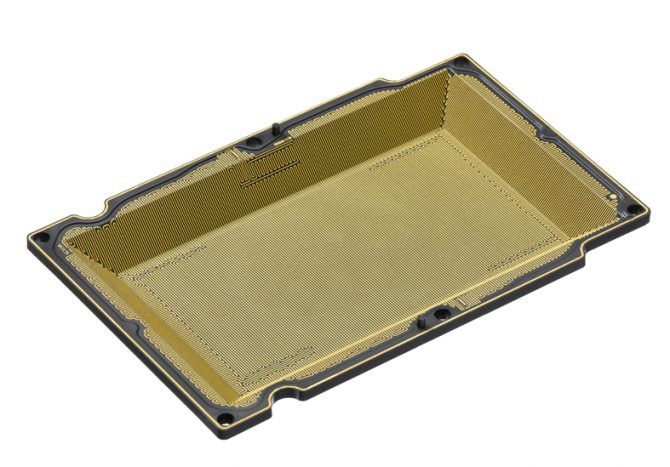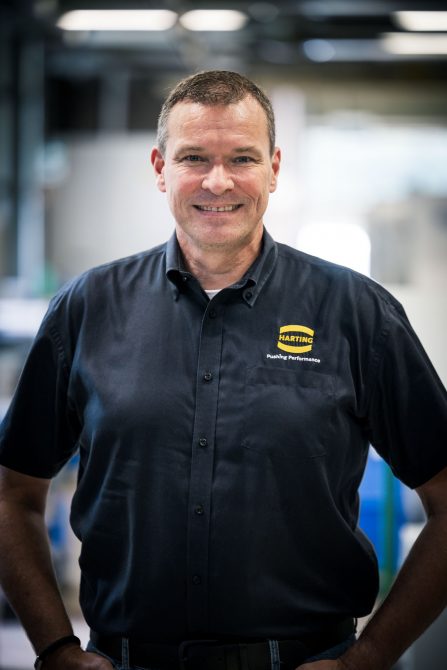Laser direct structuring (LDS) is a distinctive results tale. For nearly 20 yrs, it has been probable to use digital conductor paths specifically on to plastic sections through sequence manufacturing. LDS permits the production of digital assemblies with adaptable geometric styles. This procedure permits electronic solutions (these types of as wise telephones, sensors or clinical equipment) to turn into even more compact and extra powerful. Automatic production processes also make this course of action additional economically desirable.
There is significantly less and significantly less room offered for electronic assemblies, so solutions are desired which replace standard printed circuit boards. LDS enables even further miniaturization and makes ever more intricate geometric models achievable. This is a steady and trustworthy course of action that has recognized itself in top quality-critical sectors such as health-related technological know-how or security-pertinent parts for the automotive industry.
LDS system allows a few-dimensional assemblies
Immediate laser structuring permits 3D-MID (Mechatronic Built-in Products) assemblies to be produced. When using 3D-MID, electronic parts can be equipped instantly on to a three-dimensional base entire body, without having circuit boards or connecting cables. The base body is produced applying an injection moulding system, whereby the thermoplastic product has a non-conductive, inorganic additive.

The structure of the conductor path is used using the LDS system.
LDS enables electronic assemblies to be created in flexible geometric styles. Smart phones, listening to aids and smart watches are starting to be smaller and far more highly effective many thanks to this approach. Source: Harting
The additives in the materials are “activated” by direct laser structuring so that the plastic materials can accommodate the electrical conductor paths. The laser beam writes the areas intended for the conductor paths and produces a micro-tough framework. The released metallic particles type the nuclei for the subsequent chemical metallisation. In this way, the electrical conductor paths are utilized to the spots marked by the laser. The other spots of the a few-dimensional foundation entire body keep on being unchanged. The plastic ingredient can then be assembled in conventional SMD processes related to a standard PCB. It is also appropriate for soldering in a reflow oven.
Flexible software of laser know-how
As a single of the most significant suppliers of 3D-MID elements outside the house of Asia, HARTING works by using higher-performance laser units for the LDS course of action, with 3 lasers functioning in parallel, every single offset by 45 degrees. Many thanks to an further axis of rotation, factors can be processed by the laser concurrently from all sides (360 levels). This technological innovation allows versatile geometric shapes, these types of as reflector shells or LED lights, to be manufactured. Regardless of the nominal conductor route thickness of 16 to 20 μm, the conductor paths are still acceptable for demanding automotive components or for purposes with currents up to 10 A – for case in point for heating coils in cameras which are made use of to reduce the optics from fogging up

Bare minimum distances among the conductor paths (a): 50 – 150μm. Minimal width of the conductor paths (b): 50 – 150μm Radius (r): .2mm. Supply: Harting
Regular adjustments all through the electronics advancement stage or new factors with modified proportions can direct to pricey changes during traditional PCB output. The laser layout, in distinction, can be adapted extremely flexibly by employing the parameters of the laser’s handle application. No variations in the injection moulding are essential for this.
The output of prototypes making use of LDS is also easier when compared to regular procedures. HARTING can make the plastic foundation body employing LDS-suitable material and 3D printing. Injection moulding can also be used with inexpensive prototype applications.
New trends in the LDS process
Numerous factors of LDS know-how have been improved and even more made above the past handful of years.
- The doing work place of the laser has been enlarged from 160 x 160 x 80 mm to 200 mm x 200 mm x 80 mm, so enabling a larger packing density and the processing of even bigger factors.
- The functioning speed of the laser can be doubled to 4 m/s by optimizing the servo units and mirrors which manual the laser beam, thus considerably minimizing the processing time.
- The advancement of the optics enables the use of a laser with a diameter of 100 μm and a laser with a great focus of 50 μm for processing even more compact constructions.
HARTING is the only 3D-MID maker in the planet that has a laser method with 3 high-quality focus optics of 50 μm. Even more compact conductor route gaps can be obtained thanks to this great target laser. Thus, many conductor paths can be developed on the similar element and a better packing density can be carried out. This is made use of for security know-how, between other items, because the intently spaced and intertwined conductors are able of triggering safety alarms from even the smallest physical interference.
Developments in components and economics
Only specially selected thermoplastics are certified for the LDS approach these are accessible from inventory. The system can be even more enhanced with buyer-distinct adjustments to the plastic content:
- HARTING takes advantage of a process which adds LDS additives to non-licensed supplies to make them MID-suitable.
- Certain RAL or Pantone colours can be obtained with MID plastics by using color pigments and specific LDS additives.
- By picking suitable additives, exclusive RF features can also be carried out, based on the frequency assortment.

Electronic components – these kinds of as LEDs, ICs, photodiodes and sensors – can be connected straight on to the component carrier. The assembled part carriers can then be processed as standard SMD elements. Supply: Harting
To further more improve the value-performance of the producing method, HARTING depends on automated robotic methods. The LDS laser method is equipped with a rotary indexing table so that a part can be inserted or removed although yet another part is nonetheless being processed. The in-feed and unloading strategies are automatic by HARTING utilizing robotics. This increases throughput and autonomy, though also enabling integration into automated manufacturing procedures. An added automation step is delivered during the injection moulding approach. Listed here, too, a robot usually takes over the removal of the injection moulded elements. The use of robotics also improves the exact reproducibility of the procedures and, as a result, over-all product high quality.
Additional progress for 3D-MID

The 3D-MID caps safeguard the electronics from unauthorized obtain equally mechanically and electronically. A really exact meandering composition detects each obtain, no matter how smaller, and as a result stops theft. Source: Harting
HARTING reviews greater desire for MID initiatives and has further more expanded the 3D-MID division by investing in equipment and by attaining a competitor’s company. Impressive in-home products and solutions are also contributing to even further growth. HARTING has produced a resolution based mostly on 3D-MID technological innovation which replaces adaptable PCBs with a ingredient carrier. As an alternative of applying a flex-PCB, the component provider can be fitted straight with electronic parts, consequently conserving up to two thirds of the price tag.
—————————————-
About HARTING 3D-MID
HARTING 3D-MID is presenting the comprehensive benefit chain for 3D-MID systems from a single source, which includes enhancement/prototyping of consumer-specific items, injection moulding, laser immediate structuring, metallization, assembly and relationship technological know-how, as nicely as last inspection. Its main company is the generation of mechatronic factors for car manufacturing, business, clinical technologies and sensor programs.

Dirk Rettschlag, undertaking supervisor & IE MID at Harting MID.





More Stories
How To Promote Direct Hotel Bookings
My 50th birthday celebrations in Amsterdam
5 Ways to Improve Hotel Operational Efficiency